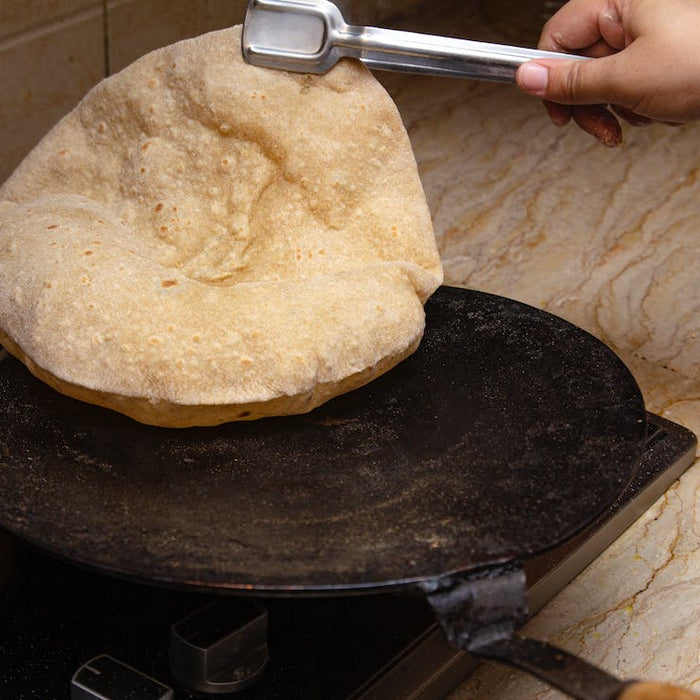
Cookware's potential impact on diabetes: Causes and Mechanisms
Millions of individuals throughout the world suffer from the chronic disease of diabetes. High glucose levels result from the body's inability to control blood sugar levels effectively. While environmental variables, such as the cookware we use, may potentially have an influence on diabetes, genetics and lifestyle factors continue to play a key part in the disease. In this article, we'll dig into the causes of diabetes and how cookware might affect this common disease.

Know These Facts?
- High Prevalence: According to estimates, 77 million individuals in India will have diabetes by the year 2021, placing a heavy strain on the country. About 8.8% of the adult population in the nation is represented by this.
- Diabetes diagnoses have been steadily rising in India during the past several years. According to projections, India will have more than 100 million diabetics by 2030, making it the country with the greatest prevalence worldwide.
- Dominance of Type 2 Diabetes: In India, type 2 diabetes accounts for around 90–95% of all instances of the disease. Poor food, a sedentary lifestyle, and obesity are major lifestyle factors that contribute to this kind of diabetes.
- Alarmingly, there are still a sizable number of undiagnosed instances of diabetes in India. According to estimates, about half of all diabetes cases in the nation go undetected, which causes treatment to be delayed and increases the risk of complications.
- Diabetes-related problems: A number of problems that are linked to diabetes have a substantial negative influence on people's health and well-being. The healthcare system in India is heavily taxed by these consequences, which also include cardiovascular disorders, renal problems, diabetes retinopathy, and neuropathy.
It is crucial to remember that these numbers might change based on the data gathering source and technique. To address this expanding public health issue, they do underline the critical need for awareness, prevention, and better diabetes management in India.

Understanding Diabetes
Types of Diabetes:
a. Type 1 Diabetes: An autoimmune condition where the immune system mistakenly attacks and destroys insulin-producing cells in the pancreas.
b. Type 2 Diabetes: A metabolic disorder characterized by insulin resistance, where the body fails to use insulin effectively.
Risk Factors:
a. Type 1 Diabetes: Genetics and family history are the primary risk factors.
b. Type 2 Diabetes: Obesity, sedentary lifestyle, poor diet, family history, and ethnicity contribute to the risk.
The Role of Cookware in Diabetes
Non-Stick Cookware: Non-stick cookware, often coated with polytetrafluoroethylene (PTFE), has gained popularity due to its convenience. However, at high temperatures, non-stick coatings may release toxic fumes and chemicals, including perfluorooctanoic acid (PFOA). Studies suggest that exposure to PFOA may increase the risk of developing diabetes and insulin resistance.
At MACclite, we prioritize the health and well-being of our customers. That's why we have developed a range of PFOA-free cookware that ensures both high performance and safety in the kitchen.
Aluminum Cookware: Aluminum cookware is lightweight and affordable but may pose concerns when used with acidic or high-heat foods. Aluminum can leach into food, and while the link between aluminum and diabetes is not fully established, some studies suggest a potential association.
We are committed to ensuring the safety and satisfaction of our customers. Our aluminum cookware is designed with your health in mind, providing a reliable, efficient, and healthy cooking experience.
Stainless Steel and Cast Iron Cookware: Stainless steel and cast iron are considered safer alternatives for cookware. They are durable, distribute heat evenly, and do not leach significant amounts of chemicals into food. Using these types of cookware can help minimize potential risks associated with diabetes.
At MACClite, we prioritize the health and well-being of our customers, especially in a country like India where healthy cooking practices are of utmost importance. That's why we highly recommend iron cookware as our top choices for healthy cooking.
Part 3: Healthy Cooking Practices for Diabetes Management
Opt for Healthy Cooking Methods: Choose baking, broiling, steaming, or sautéing over deep frying. These methods require less oil and help retain the nutritional value of the food.Incorporate Diabetes-Friendly Ingredients: Emphasize whole grains, lean proteins, healthy fats, and a variety of fruits and vegetables in your diet. These choices can help regulate blood sugar levels and promote overall health.
Prioritize Balanced Meals: Aim for balanced meals that include a combination of carbohydrates, proteins, and healthy fats. This approach can prevent blood sugar spikes and promote steady glucose control.
Stay Hydrated: Adequate hydration is crucial for diabetes management. Opt for water, herbal teas, or other unsweetened beverages instead of sugary drinks.
In Conclusion, while cookware alone may not cause diabetes, it is essential to be mindful of the potential effects certain types of cookware can have on our health. Choosing the right cookware, Iron & PFOA-free cookware and adopting healthy cooking practices can support diabetes management.
However, it is important to remember that diet, exercise, and overall lifestyle play pivotal roles in preventing and managing diabetes. Consult with a healthcare professional or registered dietitian for personalized advice and guidance in managing diabetes effectively.
Featured collection
-
Original price - Original priceOriginal price Rs. 19.99Rs. 19.99-Current price Rs. 19.99
Product title
Original price - Original priceOriginal price Rs. 19.99Rs. 19.99-Current price Rs. 19.99 -
Original price - Original priceOriginal price Rs. 19.99Rs. 19.99-Current price Rs. 19.99
Product title
Original price - Original priceOriginal price Rs. 19.99Rs. 19.99-Current price Rs. 19.99 -
Original price - Original priceOriginal price Rs. 19.99Rs. 19.99-Current price Rs. 19.99
Product title
Original price - Original priceOriginal price Rs. 19.99Rs. 19.99-Current price Rs. 19.99 -
Original price - Original priceOriginal price Rs. 19.99Rs. 19.99-Current price Rs. 19.99
Product title
Original price - Original priceOriginal price Rs. 19.99Rs. 19.99-Current price Rs. 19.99 -
Original price - Original priceOriginal price Rs. 19.99Rs. 19.99-Current price Rs. 19.99
Product title
Original price - Original priceOriginal price Rs. 19.99Rs. 19.99-Current price Rs. 19.99
Blog posts
-
-

What is Karahi or Kadahi? Exploring Its Best Use in 2024 | Non Stick
The kadai or karahi holds a special place, when it comes to Indian cooking,choose MACclite kadai cookware for a healthier and more enjoyable cooking experience.Read now -

Best Tawa for Roti 2024 - Guide to Choosing the Best Iron Tawa for Your Family
The roti tawa is the right tool to achieve the ideal texture and taste. Finding the perfect roti tawa for your family can be both rewarding and challenging in 2024 due to the many options available.Read now


